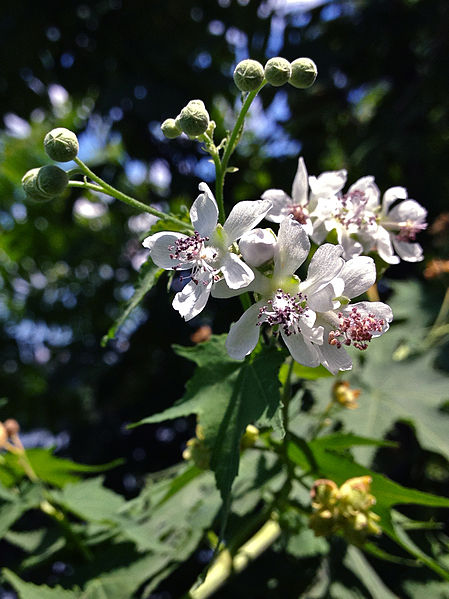American multipurpose plant may enter the European market
The plant called Sida hermaphrodita might for the first time soon enter the European market, thereby contributing to the development of several bio-based products as well as improving biodiversity. In combination with tree production this could be a great stepping stone towards a bio-based economy.

Sida hermaphrodita and timber trees! These two very different plant materials are the focus of a new research project entitled SidaTim, which aims at examining new opportunities and possible improvements for the development of the bio-based economy in Europe.
Within the research project, which is funded within the frame of FACCE SURPLUS, it will firstly be examined how the Sida plant can serve as an alternative energy plant to corn for biogas production, and as an alternative to woody crops typically used in Short Rotation Coppice (SRC) systems.
- Previous research indicates that the Sida plant has many advantages, such as contributing significantly to diversified bioeconomy and enhanced biodiversity. Nevertheless there is a huge gap of knowledge regarding its potential as a multipurpose crop, especially in Western countries, Dr. Michael Nahm, coordinator of the SidaTim project, explains.
Research also indicates that Sida can be used as a basic compound for various material products, such as fibre products, particle or insulation boards, and as a substitute for turf used as fodder due to its high protein content. Furthermore, its white colored flowers provide abundant pollen and nectar for pollinating insects.
- Sida is good for biodiversity as it is attracting many insects and is obtaining up to 120 kg of honey per hectare, Michael Nahm says.
Timber – additional income
Another focus area is the advancing and promotion of the production of valuable timber in an agricultural setting giving the farmers an additional income and the environment an improvement.
The project investigates the possibilities of planting trees for valuable timber production on the edges of fields, into existing hedgerows, or on scarps and lynchets of low ecological value between fields. In this way, negative effects of trees on crops due to shading are minimized, whilst their positive effects such as erosion reduction, wind protection, ecologic and aesthetic upgrading of a landscape, are combined with an attractive additional income for the farmer.
Partners in the 3-year SidaTim-project consortium consist of 3N Center of Experts (DE), Cranfield University (UK), West Pomeranian University of Technology Szczecin (PL), The Institute of Agro-environmental and Forest Biology (IT), Council for Agricultural Research and Economics (IT), and the University of Freiburg (DE) – the latter serving as the coordinator.
The project has been granted 1.027.000 € from the FACCE SURPLUS ERA-NET cofund.
FACCE SURPLUS
FACCE SURPLUS is an ERA-NET under the Cofund scheme of Horizon 2020 of the European Union. FACCE SURPLUS calls for collaboration among 15 countries and the EU for transnational research projects on the thematic area of sustainable and resilient agriculture. Further joint activities that go beyond this co-funded call are planned, in order to contribute to the establishment of a renewable bioeconomy in the European Research Area (ERA).
Further information
Dr. Michael Nahm
Albert-Ludwigs-University Freiburg, Germany
Email: michael.nahm@iww.uni-freiburg.de
Telephone: 0049 761 203 8589
